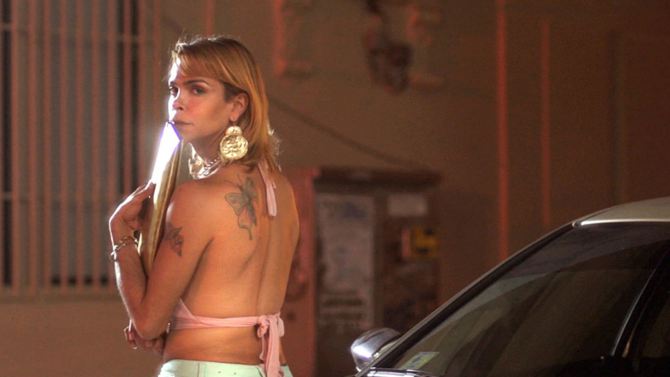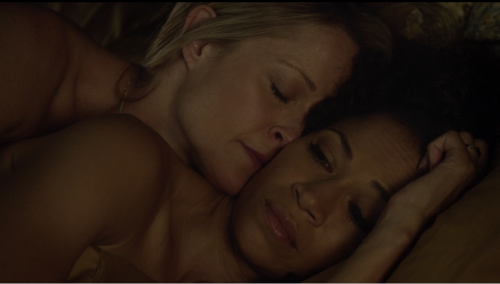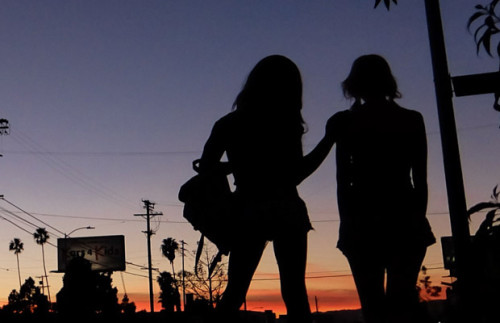This guest post by Holly Thicknes is an edited version of an article that previously appeared at Girls On Film and is cross-posted with permission.
One of the most anticipated films of January and nominated for a bunch of Academy Awards, The Danish Girl is Tom Hooper’s biographical account of Lili Elbe, a transgender woman and one of the first people to ever undergo gender confirmation surgery in 1930. Taking the film firmly onto the awards stage by playing Lili is coy-smiling, softly spoken, thespian royalty Edward John David Redmayne and starring opposite as wife Gerda is the talented Alicia Vikander.
The Danish Girl is utterly gorgeous in every way except one: an ugly stain seeping through the bespoke dress fabric and luscious upholstery. As we stoke the cultural fires of 2016 on the embers of 2015’s action-packed year – the year of nationally legalized same-sex marriage in the U.S., the Black Lives Matter campaign, Jeremy Corbyn wearing socks and sandals and raising eyebrows at oncoming toff scoffs, extended Middle Eastern intervention and a mind-boggling refugee crisis in the U.K. – it becomes apparent that the latest wave of films about progress, in themselves, aren’t very progressive at all.
Let’s call it the Redmayne Phenomena. Has anyone noticed anything about Eddie? Namely that he must spend 80% of his working life in make-up. His last two critically-acclaimed roles, in The Danish Girl and The Theory of Everything, consisted of his appropriation of marginalized peoples that he is not one of in real life — an able-bodied cis man, Redmayne played a person with a disability and a trans woman. But all actors do that, don’t they? That’s what “acting” is. Yes, but it’s 2016: representation matters. Films can and should cast trans actors and trans actresses in trans roles. A cis man playing the role of a trans woman diminishes representation and can perpetuate the dangerous trope that trans women are “men in dresses,” rather than the reality that trans women are women. Is Eddie a good actor? Yes! Is Eddie the only actor? Yes – according to all major film awards bodies.
Exaggerations aside, the casting of Redmayne as this iconic trans woman in The Danish Girl spoke volumes about the kind of high-speed, edgy-but-mainstream lives that we endeavor to live nowadays (or that we are encouraged to seek out). A film like this is targeted at heteronormative audiences seeking ‘quirky cinema’ rather than LGBTQ audiences seeking authentic LGBTQ cinema, therefore it is not made for the community which it claims to represent and is a big Hollywood lie. Films such as The Danish Girl get packaged as LGBTQ cinema, allowing cis, hetero audiences who seek to be seen as alternative to the norm to watch the film and claim to be concerned with its themes. Many of us like the idea of watching LGBTQ films, but not the challenging reality of it. So we satisfy that high-brow itch by buying into this “groundbreaking” cinema stock in awards season that actually sidelines its supposedly central issue, played by acting aristocracy Redmayne who blatantly hasn’t got a clue so resorts to weeping. In the place of the pioneering heroine I expected to see, the film depicted instead a fragile chorus girl doing a terrified audition for the lead.
Released in the UK just a few months before The Danish Girl, Sean Baker’s Tangerine also claimed to centralize the stories of trans women. Unlike the former, Tangerine is a modern work of art, not because it was shot on an iPhone, as most of its surrounding press focused on. The dusty neon-orange air that rises in clouds from the Santa Monica streets is every bit as beautiful as the Wes Anderson-esque wide shots of Copenhagen in The Danish Girl, and not only because it is unashamedly devoid of aesthetic artifice and polish, but Tangerine is a masterpiece because – like the best and most memorable films – it creates its own ideology out of itself. Tangerine diverges from The Danish Girl by casting trans actresses (Kitana Kiki Rodriguez and Mya Taylor) in the roles of trans women characters. The two films collide in their allusion to the notions of gender identity, gender expression and beauty in conversations about trans women. But Tangerine takes that necessary next step by centering and humanizing the lives of trans women, which The Danish Girl pointedly fails to do. Tangerine was screened for the entire sex worker community in the area it was made and at various LGBTQ centres. It holds nothing back: a bold and brave fuck-off to a heteronormative, cisnormative, conservative world determined to diminish its voice. That is the kind of film worthy of awards.
Redmayne, albeit his genuine go of it, could never have captured the same essence of struggle that trans women experience with transphobia and transmisogyny. The Danish Girl employs carefully constructed beauty to distract from this truth. And herein lies the main problem: if producers keep pumping money into generic scripts that get packaged as progressive, nothing will ever change in the film world, and many of us won’t notice. It is the same principle as dragging Meryl Streep into the first “big” film about the suffragette movement for 2 minutes to crank up its profile, instead of trying to rewrite standards in the same way that its, again, supposedly central, subject did.
So what is The Danish Girl about? Superficially, the legendary Lili Elbe. Actually, the sorrowful friendship of a married couple at odds. Retrospectively, the familiar trumpeting of the noble God-given skills of an actor we know all too well, while appropriating the identities of trans women.
Just think what it would have meant to the trans community, and for trans representation in film, if it was Mya Taylor from Tangerine who had been nominated for an Oscar instead of Eddie.
Holly Thicknes is a freelance film critic and editor of female-focused film blog Girls On Film. She lives and works in London, studies printmaking, and helps organise themed short film events for Shorts On Tap. She is particularly interested in the ways in which films help people carve out spaces for themselves in an increasingly lonely society. You can follow Girls On Film on Twitter at @girlsonfilmLDN.

















